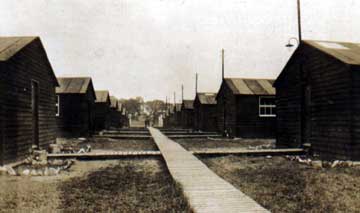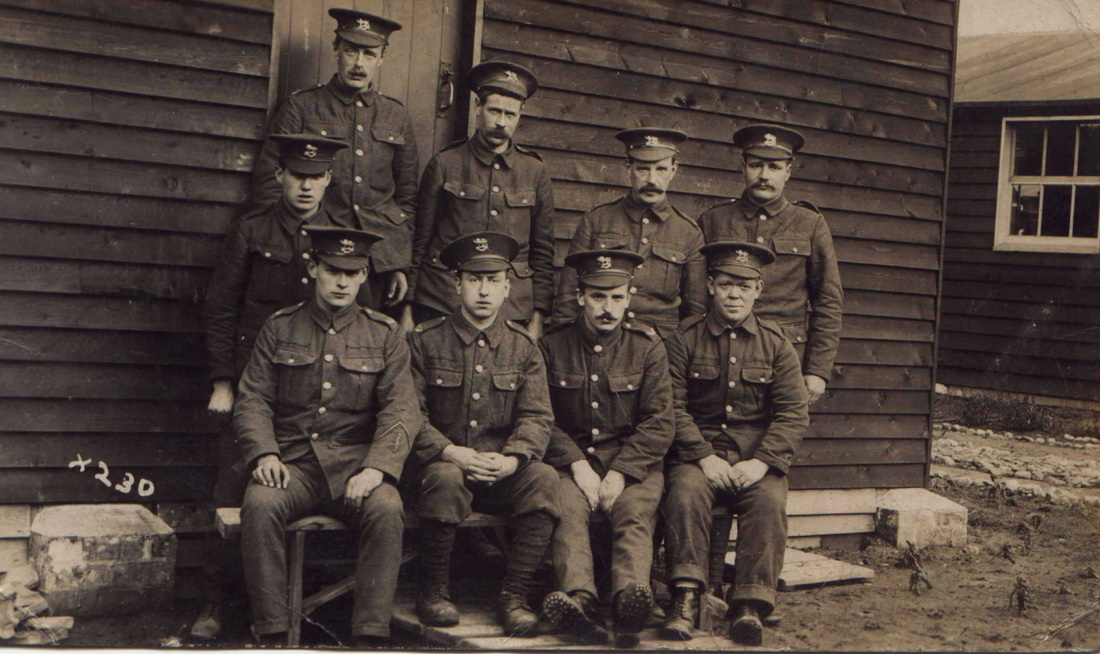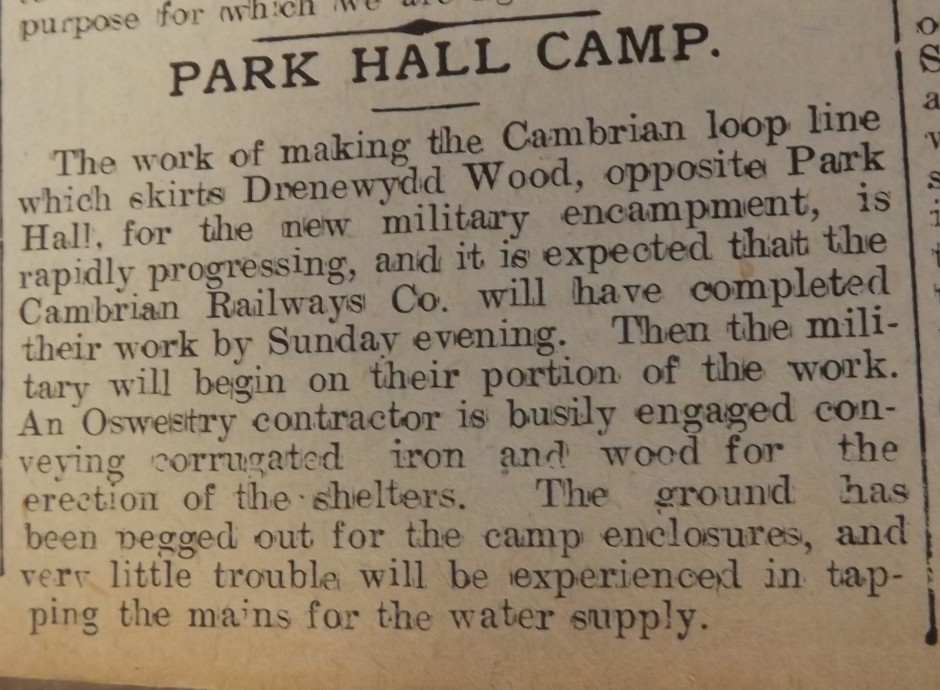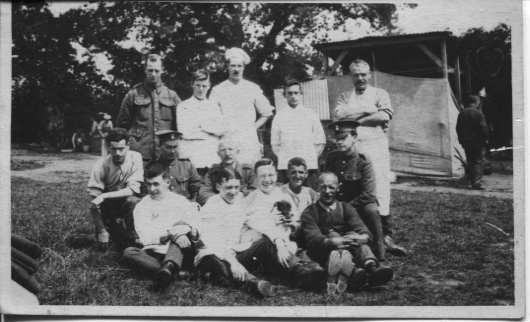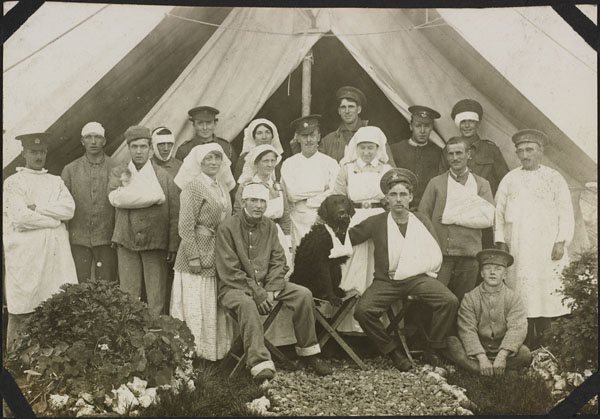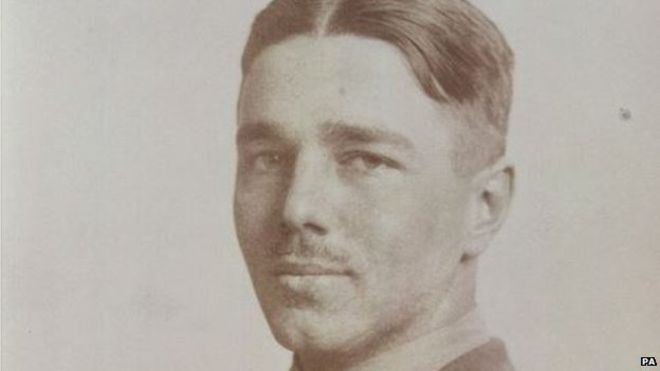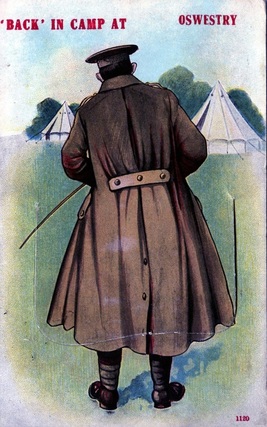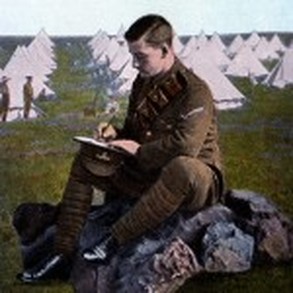|
Park Hall Camp
Leading up to the First World War the owner of the Park Hall estate was Major Wynne Corrie. In 1915 he gave Park Hall over to the military to use as their local headquarters, and in the spring of that year a military camp was constructed to train the troops. This spilled out onto the Oldport Farm site, with the area to the east of Old Oswestry Hillfort being used for excavating trenches and setting off explosives. In July 1915, the first 4,000 troops of the Royal Welsh Fusiliers and the Cheshire regiment arrived at the Hall. They disembarked at Whittington Station and marched to the camp with the Fusilier's goat mascot taking the lead. Initially 14,000 troops were stationed there, which had risen to 21,000 troops within a fortnight. As well as training on the Park Hall site the soldiers also trained on the Old Oswestry iron age hill fort close by. Its ancient ramparts proved perfect training grounds for the troops. A railway halt was built at the camp to make it easier for the soldiers to arrive for training and to depart for leave or to go to war. The camp was in constant use throughout the war, training and dispatching troops to the Front. Just before midnight on Boxing Day, 1918, a fire started in the Chapel of the Hall and quickly spread to the rest of the building. The Oswestry Fire Brigade was in attendance very quickly, but a lack of water restricted their efforts. The Shrewsbury Fire Brigade was called to assist but the timber framed building burned so quickly that there was little they could do and the Hall was destroyed. The actual cause of the fire was thought to be an electrical wiring fault that had ignited dry timber on a beam. There was also a military hospital with 866 beds and a German Prisoner of War Camp and a German Military Cemetery (click on the links for more information) Following the end of WWI, the ruined Hall and its surrounding military establishment began to fall into disrepair. The camp hospital, however, was still in use, and the Baschurch Convalescent and Surgical Home moved here in February 1921. It then became known as the Shropshire Orthopaedic Hospital. Park Hall Camp was used again in the Second World War and was eventually closed down in the early seventies. |
Wilfred Owen the war poet who spent time training at Park hall and who was born in Oswestry. Further information about his links to Oswestry can be found at
https://www.shropshiretourism.co.uk/downloads/weso-trail-online-upright%20compressed.pdf |
